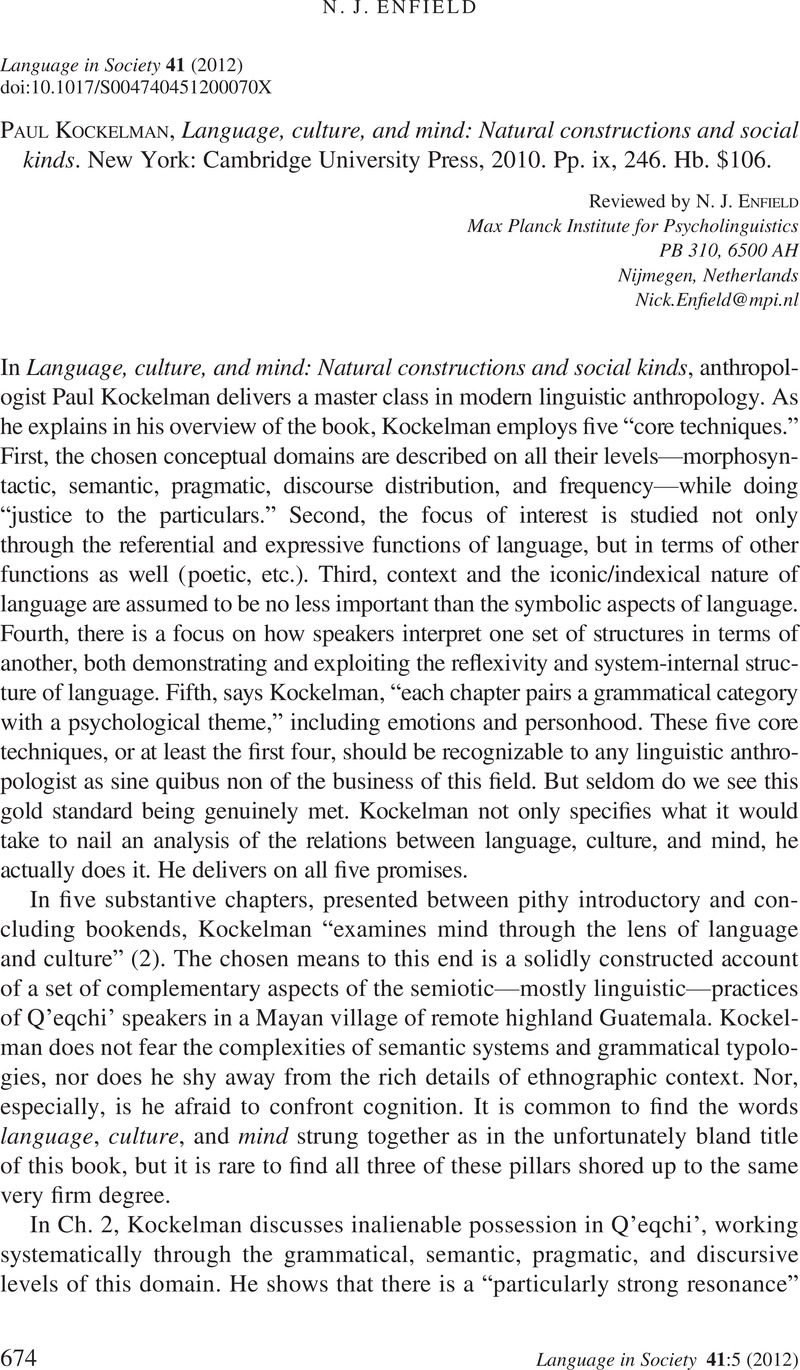No CrossRef data available.
Article contents
Paul Kockelman, Language, culture, and mind: Natural constructions and social kinds. New York: Cambridge University Press, 2010. Pp. ix, 246. Hb. $106.
Published online by Cambridge University Press: 02 November 2012
Abstract
An abstract is not available for this content so a preview has been provided. Please use the Get access link above for information on how to access this content.

- Type
- Book Reviews
- Information
- Copyright
- Copyright © Cambridge University Press 2012
References
Bull, William E. (1960). Time, tense, and the verb. Berkeley: University of California Press.Google Scholar
Enfield, N. J. (2002a). Ethnosyntax: Introduction. In Enfield, N. J. (ed.), Ethnosyntax: Explorations in culture and grammar, 1–30. Oxford: Oxford University Press.Google Scholar
Enfield, N. J. (2002b). Semantic analysis of body parts in emotion terminology: Avoiding the exoticisms of ‘obstinate monosemy’ and ‘online extension’. Pragmatics and Cognition 10(1–2):85–106.CrossRefGoogle Scholar
Enfield, N. J., & Wierzbicka, Anna (2002). Introduction: The body in description of emotion. Pragmatics and Cognition 10(1–2):1–24.CrossRefGoogle Scholar
Evans, Nicholas D. (2003). Context, culture, and structuration in the languages of Australia. Annual Review of Anthropology 32:13–40.CrossRefGoogle Scholar
Kockelman, Paul (2011). Biosemiosis, technocognition, and sociogenesis: Selection and significance in a multiverse of sieving and serendipity. Current Anthropology 52(5):711–39.CrossRefGoogle Scholar
Simpson, Jane (2002). From common ground to syntactic construction: Associated path in Warlpiri. In Enfield, N. J. (ed.), Ethnosyntax: Explorations in grammar and culture, 287–308. Oxford: Oxford University Press.Google Scholar




